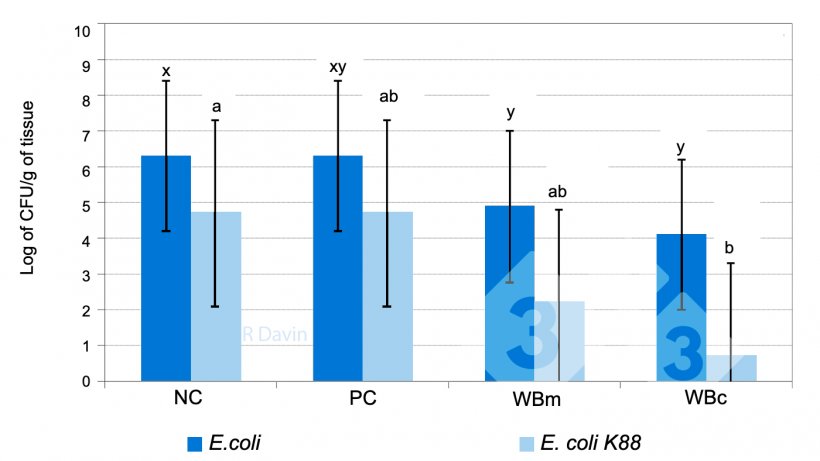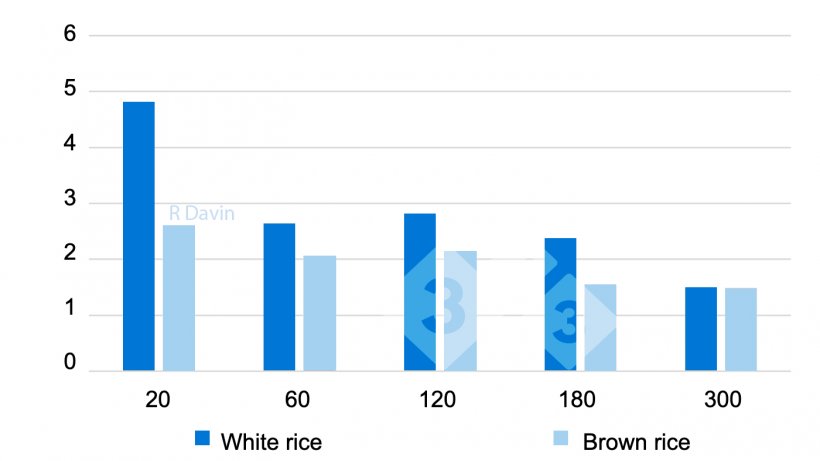Feed processing of swine diets has gained more attention in recent years. In most EU countries, swine diets have traditionally been highly processed by first grinding all raw materials usually with a hammer mill and then pelletizing them; by doing so, the feed efficiency in pigs can increase about 2% compared to the use of mash diets. However, we see more often that if diets are ground too fine (>80% of the particles < 200 µm), the retention time in the stomach becomes too short which can lead to the appearance of stomach ulcers and gastric barrier malfunction. On the other hand, prolonged retention time of stomach contents may, to some extent, become beneficial in young pigs. For instance, an improvement of protein hydrolysis in the stomach would result in greater protein digestibility throughout the small intestine.
So, our advice to nutritionists is to think about how to create/bring structure in the feed to increase nutrient digestibility and to achieve a better gastric function and intestinal health, instead of thinking about how to make diets as fine as possible to increase nutrient digestibility only. Therefore, it is important to create enough structure in the diet by adding coarse particles to stimulate an optimal stomach function and a gradual transition/flux of digesta particles from the stomach to the small intestine. This feed structure may be created by grinding single ingredients with a low energy value, like wheat bran or wheat straw. It has been shown (Molist et al. 2011) that feeding piglets a coarse rather than finely ground wheat bran (4% inclusion level) during the first two weeks post-weaning, was effective in reducing E. coli adhesion to the ileal mucosa and in reducing the severity of diarrhoea after an enterotoxigenic E. coli challenge (Fig. 1).


Although the number of weaned piglet studies evaluating the effectiveness of coarse particles in the diet is limited, studies in growing pigs have consistently shown beneficial effects. In a study by Hedemann et al. (2005), young grower pigs (33 kg of body weight) that were fed a coarse diet of either mash or pelleted (80.1% of the particles <1000 µm, 15.6% between 1000 and 2000 µm, 2.1% between 2000 and 3500 µm, and 2.3% > 3500 µm) showed a higher relative empty stomach weight (+7%) than pigs fed a fine diet (93.6% of the particles <1000 µm, 6.4% between 1000 and 2000 µm, and 0.0% > 2000 µm). In a second study (Warneboldt et al., 2016) using pigs of the same body weight class, it was shown that the pH of the content in the fundus gastric region of pigs fed a coarsely ground diet (geometric mean diameter 671 µm) was lower (pH of 2.5) than that of pigs fed a finely ground diet (geometric mean diameter 217 µm; pH of 5.0). In a third study from Bornhorst et. al (2013), the stomach retention time of 30-kg pigs fed a diet with either a high proportion of brown rice (containing the rice hulls) or white de-hulled rice was measured. The stomach retention time of pigs fed the brown rice was prolonged compared to the pigs fed with the de-hulled white rice. This positive effect on the stomach retention was attributed to the rice hulls that remain longer in the stomach. The longer retention of rice hulls in the stomach resulted in a lower stomach pH already 20 minutes after feeding the pigs compared to the pigs that received the de-hulled rice based diet (Fig. 2).

In practice, it may be challenging to find fibre-rich by-products (e.g. wheat bran or oat hulls) that can be coarsely ground and therefore bring feed structure or they may also be contaminated with undesired compounds (e.g. mycotoxins). If feed structure can not be accomplished by adding these fibre-rich by-products in your situation, we would need to find other kinds of feedstuffs. Protein sources should not be ground coarsely to avoid protein digestibility being impaired. Therefore, the remaining option to bring feed structure to the diet is starch-rich sources, e.g. grains. One possibility would be to add a proportion of the grains as whole grains in the mixer and then pelleting the diet. Another possibility would be grinding a small proportion of grains (like 5%) in a roller mill and then pelleting the diet. The success of this strategy will depend on the percentage of grains, either as whole grains or rolled, that will keep structure after pelleting. From the experience that we have built so far, it seems that adding 5% of rolled barley to the mixture and then pelleting the diet could be enough to exert some positive effects on the stomach retention and gut health of post-weaning piglets. In the coming years more research will be conducted on how to optimize feed structure in swine by single processing of some ingredients. The era of grinding all the ingredients in the same way probably will come to an end if we want to achieve the right balance between feed efficiency and stomach-gut health in swine.





